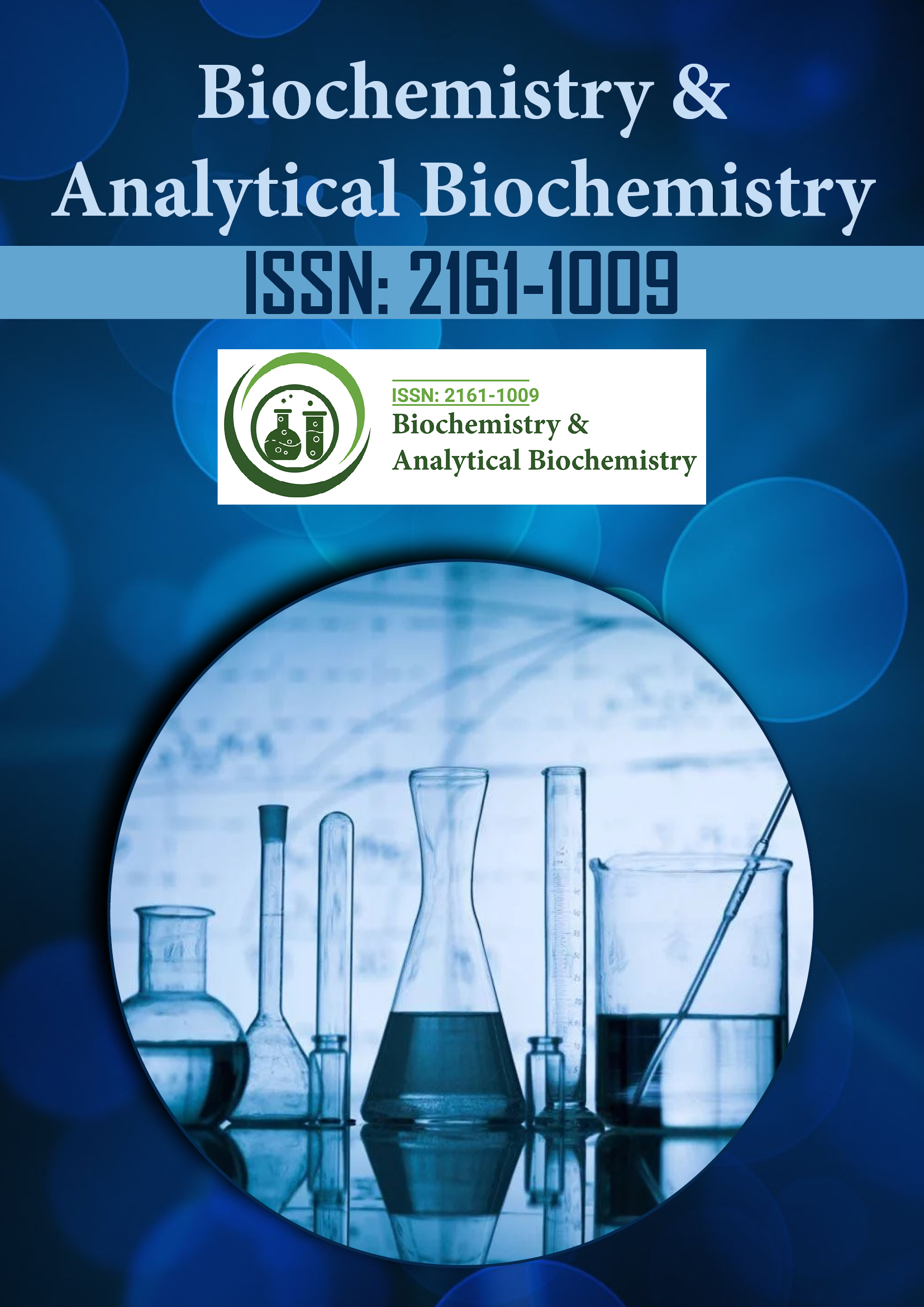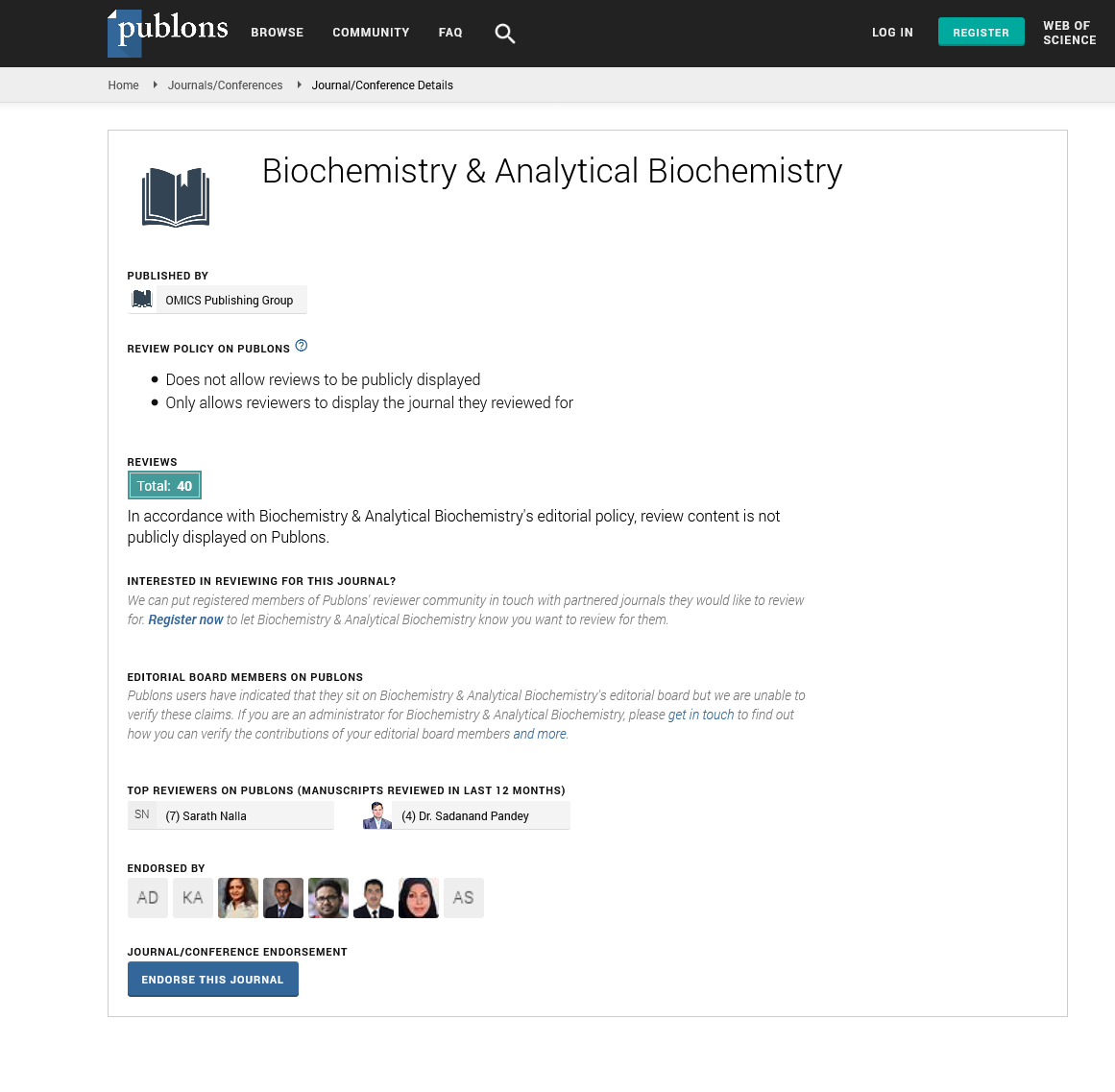Indexed In
- Open J Gate
- Genamics JournalSeek
- ResearchBible
- RefSeek
- Directory of Research Journal Indexing (DRJI)
- Hamdard University
- EBSCO A-Z
- OCLC- WorldCat
- Scholarsteer
- Publons
- MIAR
- Euro Pub
- Google Scholar
Useful Links
Share This Page
Journal Flyer

Open Access Journals
- Agri and Aquaculture
- Biochemistry
- Bioinformatics & Systems Biology
- Business & Management
- Chemistry
- Clinical Sciences
- Engineering
- Food & Nutrition
- General Science
- Genetics & Molecular Biology
- Immunology & Microbiology
- Medical Sciences
- Neuroscience & Psychology
- Nursing & Health Care
- Pharmaceutical Sciences
Opinion Article - (2024) Volume 13, Issue 4
Metabolomics and Proteomics: Unraveling Complex Biochemical Networks in Health and Disease
Sarah Williams*Received: 27-Nov-2024, Manuscript No. BABCR-24-28132; Editor assigned: 29-Nov-2024, Pre QC No. BABCR-24-28132 (PQ); Reviewed: 13-Dec-2024, QC No. BABCR-24-28132; Revised: 20-Dec-2024, Manuscript No. BABCR-24-28132 (R); Published: 27-Dec-2024, DOI: 10.35248/2161-1009.24.13.564
Description
Metabolomics and proteomics are two powerful branches of research that provide comprehensive analysis into the biochemical networks underlying health and disease. These disciplines, which focus on the study of metabolites and proteins respectively, enable researchers to capture a summary of cellular function at different levels of biological organization. By examining the complete set of metabolites and proteins within a given system, scientists can separate the detailed molecular mechanisms that govern cellular processes and identify potential biomarkers for disease diagnosis, prognosis, and therapeutic intervention.
Metabolomics is the study of the small molecules, or metabolites, that are produced during metabolism. These metabolites serve as end products of cellular processes and provide key information about the physiological state of an organism. The metabolome, which encompasses all the metabolites present in a biological sample, is highly dynamic and reflects the activity of enzymes, signaling pathways, and metabolic networks. Metabolomics involves the large-scale analysis of metabolites using techniques such as Gas Chromatography-Mass Spectrometry (GC-MS), Liquid Chromatography-Mass Spectrometry (LC-MS), and Nuclear Magnetic Resonance (NMR) spectroscopy. These methods allow for the identification and quantification of thousands of metabolites in complex biological samples, ranging from small molecules like amino acids, lipids, and sugars, to larger biomolecules like nucleotides and organic acids.
By analyzing changes in the metabolome, researchers can gain valuable understandings into metabolic dysregulation associated with various diseases. For example, in cancer, alterations in cellular metabolism, such as increased glycolysis (the Warburg effect), are common features of tumor cells. Metabolomics can identify these changes, offering potential biomarkers for early cancer detection and therapeutic observing. Similarly, in metabolic diseases such as diabetes, metabolomic profiling can reveal imbalances in glucose and lipid metabolism, providing insights into disease mechanisms and identifying potential targets for intervention. In neurological disorders like Alzheimer's disease, metabolomics can discover metabolic shifts related to neuronal dysfunction, potentially offering new avenues for drug development.
Proteomics, on the other hand, focuses on the large-scale study of proteins, which are the primary molecular effectors in the cell. Proteins carry out nearly every cellular function, from catalyzing biochemical reactions to mediating cell signaling and structural support. The proteome refers to the entire complement of proteins expressed by a cell, tissue, or organism at a given time, and its complexity is immense, as proteins undergo various Post- Translational Modifications (PTMs) such as phosphorylation, glycosylation, and acetylation, which regulate their activity and function. Proteomics aims to characterize not only the identity of these proteins but also their abundance, structure, localization, and interactions within cellular networks.
The study of the proteome is essential for understanding cellular function, as changes in protein expression and modification can serve as indicators of disease. High-throughput proteomic techniques, such as two-Dimensional gel Electrophoresis (2-DE), Mass Spectrometry (MS), and protein microarrays, allow for the identification and quantification of thousands of proteins simultaneously. Mass spectrometry-based proteomics, in particular, has revolutionized the field by enabling the detection of low-abundance proteins and PTMs in complex biological samples. This technique has been used to identify biomarkers for diseases such as cancer, cardiovascular diseases, and autoimmune disorders. In cancer, for instance, proteomic analysis can reveal alterations in protein expression patterns, providing valuable diagnostic and prognostic information, as well as identifying potential therapeutic targets.
The integration of metabolomics and proteomics allows for a more comprehensive understanding of cellular function and disease mechanisms, as the two disciplines complement each other. While metabolomics reveals changes in the small molecules involved in metabolism, proteomics provides insights into the enzymes and regulatory proteins that drive those metabolic pathways. By combining both datasets, researchers can construct detailed biochemical networks that map the interactions between proteins, metabolites, and signaling pathways. This systems-level view of cellular processes offers a comprehensive perspective on the molecular basis of health and disease.
Citation: Williams S (2024). Metabolomics and Proteomics: Complex Biochemical Networks in Health and Disease. Biochem Anal Biochem. 13:564.
Copyright: © 2024 Williams S. This is an open access article distributed under the terms of the Creative Commons Attribution License, which permits unrestricted use, distribution, and reproduction in any medium, provided the original author and source are credited.

